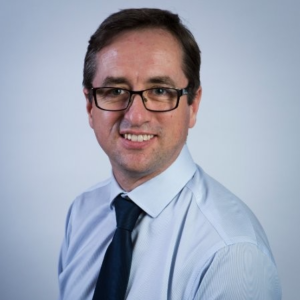Committee Members
We are united by a strong interest in the permanent possibility of exchanging knowledge and working together and that is why we established the Light Collaboration Network. Some of us met for the first time at a workshop in 2019, but it wasn’t until March 2022 that we were able to meet as a group for the first time.

Myriam Aries
PhD in Lighting Technology
School of Engineering, Jönköping University
Expertise: Human Factors in Lighting, Lighting Science, Lighting Technology
Myriam’s research and teaching includes the understanding and impact of dynamic, smart light products and environments on human work and sleep performance as well as the spill-over effects from one architectural environment to another. The group’s research covers lighting solutions in real-time indoor and outdoor settings as well as computational/virtual environments.

Ute Besenecker
PhD in Architecture
KTH Royal Institute of Technology, School of Architecture
Expertise: Architectural Lighting, Exterior Lighting, Lighting Design, Perception Research
Ute has over 20 years of experience combining architectural and lighting design with research related to the impact of light distribution and spectrum on colour and brightness perception in spatial environments, with the objective to support advancements in both lighting technology and architectural design practice. She teaches courses at Master and PhD level, and her current research includes architecture-integrated lighting solutions in a real school testbed, and pedestrian lighting in urban green areas.

Hillevi Hemphälä
PhD in Visual Ergonomics
Lunds Tekniska Högskola, Lund University
Expertise: VERAM, Light. Flicker, Perception, Glare
Hillevi’s work concerns visual ergonomic aspects of work places, such as risks assessments and the connection between eyestrain and musculoskeletal strain as a result of glare, contrast imbalance, flicker or head/body posture. She recently validated the Visual Ergonomic Risk Assessment Method (VERAM) and is now training occupational health care staff in this method. She is working on lighting for hospitals, including rooms for open surgery, minimally invasive surgery, neonatal intensive care, and currently involved in installing human centric lighting for psychiatric wards.

Johannes Lindén
PhD in Physics
Division Ergonomics & Aerosol Technology, Lund University
Expertise: Photometry, Flicker, Temporal light modulation/artefacts, Radiation Safety
Johannes’ research focuses on light measurement, mainly on colour and flicker from light sources. Flicker, or temporal light modulation (TLM), has reappeared as a problem with the advent of LED technology. This requires development of new measures and standards. Johannes has experience in setting-up light measurement laboratories and in teaching photometry and colorimetry.

Katharina Wulff
PhD in Biology
Departments of Radiation Sciences and Molecular Biology, Wallenberg Centre for Molecular Medicine (WCMM), Umeå University
Expertise: Behavioural Biology, Chronobiology, Sleep, Mental Health, Light Therapy
Katharina has worked on the physiological analysis of human biological time-keeping, sleep and mental health for 20 years. Key achievements are the introduction of chronobiological assays into psychiatry and characterising links between circadian/sleep disruption and mental health. She established the ‘Nordic Daylight Research Programme’ (www.katlab.org) at high latitude to study the brain’s sensitivity to the changing speed of daylight unbiased by electrical light, the impact it has on our physiology and how well our mental health rebounds.

Stuart Wales
Events and Communications
Stuart works with arranging our events and communications. Originally from the UK, Stuart now lives in Umeå, Sweden, where he is experiencing first hand the effects of daylight seasonality.
The impact
The reason for this network is clear: we all play an active role in research with light-related topics. Together we become better in taking advantage of understanding relationships with light. We approach light matters from multiple dimensions and our results will arrive from an in-depth analysis. We are rooted in different disciplines and eagerly cross boundaries between architecture, lighting design, optometry, physics and biology. Our research will have a deeper scope as a result.
The challenges
New discoveries in light research, in the art of pigments and surprises in biology on how life harnesses light show its potential as a tool. The challenge is for R&D in architecture, engineering and design to utilise this rapid growth in knowledge.
Synergies through collaborative efforts across fields is the only way forward. New forms of educating the next generation is crucial for future built environments, urban landscaping and using natural light as a renewable resource.
On our way …
We think of the Network as an enrichment through learning from mentors, applying new knowledge by combining elements in theories, methods and concepts and take a science-based approach in practice on what works and what doesn’t.
We share latest news in discovery research from our respective fields and bundle research/ education/ dissemination activities to inspire, engage and develop a mutual understanding to convey the knowledge in an effective manner.
How you can participate
We welcome stories about experiences with light, seasonal wellbeing and mental health in the context of the environment. We encourage anyone interested in improving conditions for staff, students, patients, communities, wild or domestic animals to work with researchers to build new evidence.
Individuals and businesses could thereby accelerate knowledge in what kind of light works for whom and in what context.
Feel free to get in touch with your idea or project that you think could be important to discuss, join our LinkedIn group or subscribe to our Newsletter.
